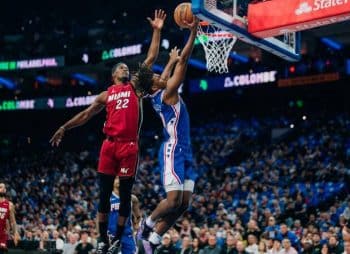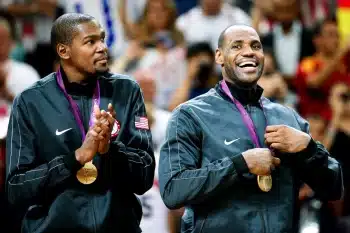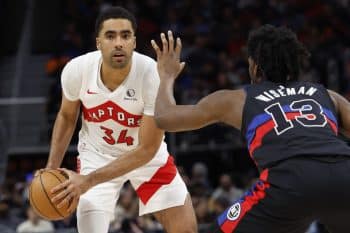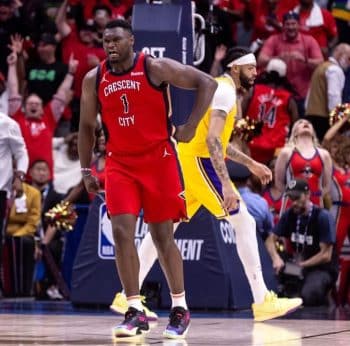NBA
How to Reform NBA Contract Extensions

In the 2011 Collective Bargaining Agreement, a priority for the owners was allowing teams to retain their own free agents in the wake of the Big Three convergence in Miami. They instituted a number of key reforms to encourage this, such as limiting sign-and-trades and increasing the amount the prior team could offer in raises relative to a new team. But, as noted in this piece, they almost completely undermined their efforts by limiting extensions in an effort to save them from themselves.
Under the previous CBA, teams gave out ludicrous eight-figure per year extensions to veteran players like Richard Hamilton and Stephen Jackson long before they were due to become free agents. In an effort to curb this, the new CBA limited any extensions for veterans (i.e., players not coming off rookie contracts) to four years, including the current season. Because the “current season” in this instance continues until June 30, the longest extension that can ever be given before a player becomes a free agent is three years.
As a result, it makes almost no sense for any decent player who is not coming off a rookie contract to extend before becoming a free agent, because the player can receive a five-year new contract from his current team. Even if he signs elsewhere, he can still get a four-year contract with another team rather than only three years had he extended.
Thus, much of the work the owners did to deter free agents from leaving was undone by taking the best method for retaining players–preventing them from becoming free agents in the first place–out of the owners’ hands.
Assuming that incentivizing free agents from leaving their prior teams is both wise* and just (I won’t comment either way), slightly liberalizing the extension rules is a great place to start.
Of course, more extensions could mean more terrible decisions. Look at the crippling Anderson Varejao extension for confirmation that management’s worst impulses in this regard have by no means been eliminated. So the new system would need some limits, while still allowing teams to offer extensions to true superstars that they would actually want to sign.
My proposal is that teams would be allowed one Designated Player Veteran Extension in addition to one Designated Player Rookie Extension. This extension could be signed between the Moratorium and October 31 prior to the the expiration or potential expiration (in the case of a player option or ETO) of a contract the following summer. The extension would have to be for the player’s maximum salary with the maximum annual raises, and could go for three new years past the end of the existing contract.
That is step one. Then, the following summer when the extension kicks in, the player and team have the option of agreeing to add another one or two years at the maximum salary and raises onto the extension, so that the eventual contract could equal the years and dollars the player would have received under the current system had he become a free agent. Such an extension could only be given to a player for whom the team would have had Bird rights had he become a free agent. The player would also have a no-trade clause through January 15 of the following year–the time at which he could first be traded were he re-signed with Bird rights.*
How and why would this work in practice? Let’s take the example of Stephen Curry, whose bargain four-year, $44 million contract which he signed as a Rookie Extension expires in the summer of 2017. He will be 29. Under the current system, Curry would only be eligible for an extension on the third anniversary from when the contract was signed. However, he would never do so because a) he could only extend for three years rather than getting a new five-year contract as a free agent and b) the extension could only start at 107.5 percent of his prior salary, approximately half of the maximum he will likely be able to earn on a yearly basis by 2017 with the cap increases. Under the current system, Curry has no choice but to actually reach free agency, at which point anything could happen.
With the proposed system, Curry and the Warriors could agree to a three-year maximum extension in the summer of 2016, which would kick in during the summer of 2017. He would never reach free agency. After the start of the 2017-18 league year until October 31, he and the team could agree to add a year or two onto the contract assuming both still desired to do so. Either way, Curry would have a trade veto from the moment he signed the extension in the summer of 2016 until January 15, 2018.
This seems a nice compromise of the original goal of protecting owners from themselves and giving players a reason to actually extend. True, Curry would not be guaranteed a full five-year extension, but he also gets at least three years in case he suffers a severe injury or performance decline. And there is little opportunity cost to Curry; if he is still a good enough player in the summer of 2017 that he would have merited a new five-year max contract as a free agent, presumably the team would still offer him the extra two years on the extension that summer anyway to make sure it keeps him in the fold for the maximum possible amount of time.
The proposed system would allow teams to keep the true superstars who really deserved maximum extensions, while preventing the sort of killer Hamilton/Jackson/Varejao extensions for middling, aged veterans that really throttled teams. And requiring that the team has full Bird rights at the expiry of the existing contract would help prevent cap shenanigans for short-tenured players that would not have been possible under the old system.
It can certainly be argued whether saving the owners from themselves and dissuading superstar player movement are worthy ends. But the owners seem to find it important. This proposal would provide a superior mechanism to the current system.











